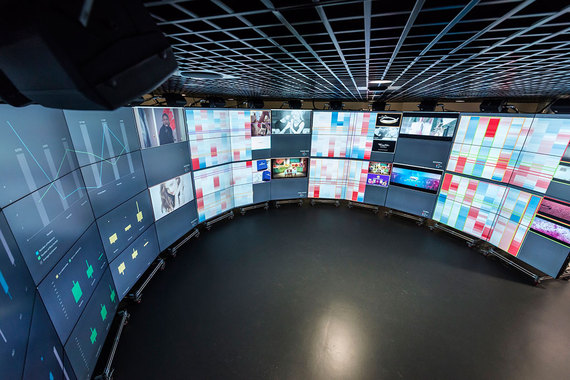By Martin Boddy, CEO, Jaywing
Emotion tracking is the hot topic on everyone’s lips in ad land right now. Some are sceptical; some are diving in head first. It’s the holy grail of marketing and a huge next step in how we understand and appeal to consumers, if we get it right.
From Galvanic Skin Response (GSR) technology that measures your sweat to facial recognition algorithms that figure out your reactions, it’s an area few big agencies can afford to ignore. The question is, what does it mean for creativity and can you rely on it?
Many a creative is frustrated by client cautiousness and decisions by committee. And we all know focus groups are flawed, often dominated by one or two vocal individuals and limited in their outlook by post-rationalisation. The result is that more often than not things tend toward the safe but uninspired centre.
The focus of the last few years seems to have centred more on the creative use of media than the creative idea, with the likes of Cadbury’s gorilla advert now few and far between. At one level the creative vacuum is fuelled by belt-tightening, ever-increasing target-driven needs and perhaps worries that spending big and failing may have significant personal consequences. At another, cheap media has lowered the barrier to entry across the board and the costs and complexity associated with more sophisticated use of media may seem more hassle than they’re worth. Except that the rise of technology has made for a highly distracted audience that is increasingly challenging to engage; not just because they’re processing so much information all of the time but also because they’ve become rather bored with it all and now have the means to switch off advertising and marketing messages in the blink of an eye. Indeed a study by The Internet Advertising Bureau found that marketers in the UK waste £485m on unseen online ads each year. Quite the conundrum. And surely one that points to making highly creative output more essential than ever.
So the question is, can emotion tracking liberate creative thinking or will it simply result in a different kind of formulaic delivery where creatives have to be less creative?
I can’t imagine anything more dull than formulaic creative output, both as a consumer and as someone with a vested interest in the industry.
If I had a magic formula for creative output, that was guaranteed to work for my clients, the industry would be clamouring to get hold of it. And as consumers, we love to absorb highly engaging, beautiful content and we love to share content that excites or entertains us, especially if we’re the first to do so and thus proving our credentials with our friends.
There are a number of things that must be considered here. First to ensure emotions are tracked and registered properly and then to understand the value of that information going forward.
So how do you measure emotions and physical reactions? The key is a basis in science. Which means repeatable methodology and control coupled with choosing the right neuroscience technology. For example, there is no point in using GSR if the room temperature isn’t steady and candidates comfortable. The resultant data, especially if the room temperature is changed mid-experiment, simply won’t tell you anything useful. Further, while representative sampling isn’t new in quantitative research, this is more akin to qualitative but if you’re to derive anything from the data, sampling and scale remain important.
This is why in our collaboration with Imperial College’s Data Science Institute, we will use neuroscience tech such as medical grade Electroencephalographs (EEG), Steady State Topography (SST) and functional magnetic resonance imaging (fMRI) alongside sophisticated physical response technology, such as eye trackers that deliver across the peripheral vision. Furthermore, a multi-disciplinary team of scientists will ensure precision that delivers scientifically defensible insight.
And what of the value of this information? Is it simply a new way to test advertising and creative concepts? It’s great to know how different types of people react differently in a moment and even in the early parts of our engagement with Imperial, we’ve already found some interesting brain function responses, such as gender differences and differences between what people said they were engaged with vs their brain activity.
But there is danger here in the potential to be swept up in the excitement of it all. The bigger job is to follow that through to how an emotional response in a moment, or indeed several repeated moments, translates into buying behaviour, brand advocacy, cultural and attitudinal shifts. And from this, taking it yet another step even further in search of the holy grail, to predicting how different people will react to different stimuli to achieve the outcome you are looking for.
It is at this point we unleash creative thinking through a framework of scientific understanding that gives our creatives a platform to deliver braver creative concepts that clients can place their faith in with confidence they’ll deliver commercially. It allows creative to breath and have a voice in places and for brands it perhaps ordinarily wouldn’t. Finally, it means a rich world of opportunity for consumers who will get to hear about products and services that interest them in captivating and entertaining ways that translate to true brand advocacy and loyalty.
Done properly, emotion tracking has the potential to satisfy greatly as a consumer and as someone with a vested interest in the industry – both of whom are hungry for a richer creative world. Done poorly, it could be an expensive gimmick.


